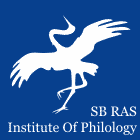 |
|
||||||||||||
|
Institute of Philology of
the Siberian Branch of Russian Academy of Sciences |
|
||||||||||||
|
|||||||||||||
DOI: 10.25205/2307-1737 Roskomnadzor certificate number Эл № ФС 77-84784 | |
| Kritika i Semiotika (Critique and Semiotics) | |
|
Article
Authors: Yervand H. Margaryan, Gayane S. Margaryan Russian-Armenian (Slavonic) University, Yerevan, Armenia; Institute of Oriental Studies of the Academy of Sciences of the Republic of Armenia, Yerevan, Armenia; Yerevan State Conservatory named after Komitas, Yerevan, Armenia
Abstract: This article provides a comprehensive analysis of the verbal and musical texts of two cult songs dedicated to Yerevan of the postmodern era “My Yerevan” to the music of Arno Babajanyan, to the words of Nora Adamyan and Harold Registan (1958), first performed in the film directed by Yuri Erzinkyan and Laert Vagharshyan “Songs of First Love” and “Erebuni-Yerevan” (1968) by Edgar Oganesyan, in the words of Paruyr Sevak. The first of these songs became the brand of postmodern Yerevan, the second – its official anthem. The article identifies the main stylistic and expressive means, melodic and verbal components of songs; the connections of the songs with the basic concepts of the Armenian linguistic culture and the traditions of urban song folklore are revealed. Comparative and interpretative analysis of verbal texts allowed us to identify the main stylistic techniques (visual and expressive means) that “humanize” the song, to consider ways of reflecting the songwriters and their audience, to understand what people lived, appreciated and loved in that era, what phenomena and trends were relevant in that historical period, what cultural trends they were dominant, and which social forces acted as customers, what goals they pursued. The article shows how the transformation of tastes and preferences took place with the change of generations, and how this was reflected in the songs about Yerevan. Keywords: Yerevan, verbal and musical analysis, Arno Babajanyan, Edgar Oganesyan, Paruyr Sevak, reflection of songwriters and audience Bibliography: Abeghyan M. Istoriya drevnearmyanskoi literatury [History of Ancient Armenian Literature]. Yerevan, AS ArmSSR Publ., 1948, vol. 1, 504 p. (in Russ.) Amatuni S. B. Arno Babadzhanyan. Instrumental'noe tvorchestvo [Arno Babajanyan. Instrumental creativity]. Yerevan, Sovetakan grokh Publ., 1985, 208 p. (in Russ.) Burmatov M. A. Estradnaya pesnya: k probleme traktovki zhanra v muzykal'noi nauke [Pop song: on the problem of genre interpretation in music science] Aktual'nye problemy vysshego muzykal'nogo obrazovaniya [Current problems of higher music education], 2018, no. 3 (49), pp. 82–86. (in Russ.) Emer Yu. A. Tsennostnaya model mira traditsionnogo folklora v zhanrovom voploshchenii [The value model of the world of traditional folklore in genre embodiment]. Vestnik of Tomsk State University, 2007, no. 297, pp. 25–32. (in Russ.) Ghaziyan A. S. Hay zhoghovrdakan rrazmi yev zinvori yerger [Songs of the Armenian People’s War and soldier]. Yerevan, Academy of Sciences of the Armenian SSR Publ., 1989, 390 p. (in Arm.) Khachaturyan A. I. Stranitsy zhizni i tvorchestva: Iz besed s G. M. Shneersonom [Pages of life and creativity: From conversations with G. M. Schneerson]. Lit. processing. and introductory articles, pp. 3–32, by G. M. Schneerson. Moscow, Sovetskii kompozitor Publ., 1982, 200 p. (in Russ.) Kocharyan A. Hay gusanakan yerger, yer, hssh ga hratarakch' [Armenian Gusan songs]. Yerevan, Academy of Sciences of the Armenian SSR Publ., 1976, 372 p. (in Arm.) Kushnarev H. Voprosy istorii i teorii armyanskoi monodicheskoi muzyki [Questions of the history and theory of Armenian monodic music]. Leningrad, Muzgiz, 1958, 626 p. (in Russ.) Lurie S. V. Istoricheskaya etnologiya [Historical ethnology]. Moscow, Akademicheskii proekt Publ., 2004, 147 p. (in Russ.) Nerses Schnorali. Pesni: Elegiya na vzyatie Edessy [Songs: Elegy for the Capture of Edessa]. Intr. art. by L. Mirijanyan. Yerevan, Sovetakan grokh, 1982, 214 p. (in Russ.) Piotrovsky B. B. Van Kingdom (Urartu) [Vanskoe czarstvo (Urartu)]. Moscow, Oriental Literature Publ., 1959, 282 p. (in Russ.) Sargsyan G. Yerevany hay yergarvestum [Yerevan in the Armenian song ]. Comp. by G. Sargsyan. Yerevan, City Hall, Historical Museum, 2011, 164 p. (in Arm.) Sarkisyan O. “Voghbi” zhanry Naghash Hovnat'ani tagherum [The genre of “crying” in the Tag of Nagash Hovnatan]. In: Naghash Hovnat'an. Hodvatsneri zhoghovatsu [Nagash Jonathan. Collection of articles]. Yerevan, Lusakern Publ., 2022, 103 p. (in Arm.) Shegai Yu. K. Formirovanie navykov dzhazovoi improvizatsii u studentov-vokalistov v protsesse professional'noi podgotovki [Formation of jazz improvisation skills among vocal students in the process of professional training]. World of Science, Culture, Education, 2021, no. 2 (87), pp. 349–351. (in Russ.) Stepanyan N. Iskusstvo Armenii. Cherty istoriko-khudozhestvennogo razvitiya [The art of Armenia. Features of historical and artistic development]. Moscow, Sovetskii khudozhnik, 1989, 312 p. (in Russ.) Tagmizyan N. K. Hay gusanner, Zhoghovatsun [Music in ancient and medieval Armenia]. Yerevan, 1982. (in Arm.) Tarverdyan G. Hay gusanner [Armenian Gusans]. Сomp. by G. Tarverdyan; ed. by A. Nazinyan. Yerevan, State Publ. of Armenia, 1957. (in Arm.) Teroganyan M. I. Arno Babajanyan. Moscow, Kompozitor Publ., 2001, 328 p. (in Russ.) Vermenich Yu. T. Dzhaz: Istoriya. Stili. Mastera [Jazz: A History. Styles. The masters]. St. Petersburg, Lan' Publ., 2007, 608 p. (in Russ.) Zucker A. M. Otechestvennaya massovaya muzyka: 1960–1990 [Domestic mass music: 1960–1990]. 2nd ed. Rostov on Don, Rostov State Conservatory named after S. V. Rachmaninov Press, 2012, 256 p. (in Russ.) |
 |
Institute of Philology Nikolaeva st., 8, Novosibirsk, 630090, Russian Federation +7-383-330-15-18, ifl@philology.nsc.ru |
© Institute of Philology |


